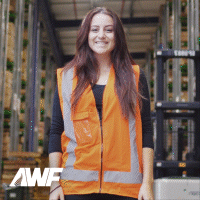Passport Control & Immigration
However, feeling fully informed and prepared will go a long way to making the whole process as pain-free as possible. This is what will happen – step by step.
BEFORE LEAVING HOME
Step 1 – Do I need a Visa?
Pre-arranged visas are not required if -
- you are a resident of either Australia or New Zealand
- you are a holder of a Resident Permit
- you have an Australian passport
- you are a British passport holder who has – and can prove – the right to preside permanently in the UK. As a holder of a British passport you are entitled to remain in New Zealand up to 6 months.
- you hold a passport from one of the visa-waiver countries (of which there are around 60). Visa-waiver eligible nationals can remain in the country for up to 3 months and on arrival will need to show evidence of onward travel from New Zealand along with proof of sufficient money for their stay. A bank statement is generally acceptable.
All passports must show an expiry date at least 3 months after the date you intend to leave New Zealand.

If your country is not listed on the visa-waiver list or you wish to stay for a longer period than the visa-free allowance allocated you will need to apply for a 'Visitor Visa' before leaving home. Detailed information regarding this along with a downloadable application form can be found at www.immigration.govt.nz
If you intend to work or study during your stay in New Zealand you will need to apply for a different type of visa. The most common and well-known of the options available is the 'Working Holiday Visa' scheme open to 18-30 year-olds which allows stays for a year or more.
This process can be a little more involved and lengthy so you will need to start the ball rolling long before you intend to arrive in New Zealand. For some nationals application while in New Zealand is possible. Full details of the working visa scheme and options for students can be found at www.immigration.govt.nz
ON THE PLANE
Step 2 – The Passenger Arrival Card
A little while before landing, the airline crew should come round handing out Passenger Arrival Cards. This form asks for personal information such as name, date of birth and passport number etc as well as a series of yes/no boxes to tick related to what you are bringing into the country, where you are coming from and so forth. Keep hold of this card as you will be required to hand it over at Passport Control and Customs.
AFTER GETTING OFF THE PLANE
Step 3 – Passport Control and SmartGates
On getting off the plane the first part of your successful entry into New Zealand will be at Passport Control. An immigration officer will have a look at your arrival card, passport, any visa you may have and need along with any other supporting paperwork you may have gathered during the visa application processes. Such things might be evidence of sufficient funds, proof of onward travel or medical reports.
Sometimes you will be asked a few questions at this point. Persons are picked randomly for this so it is highly possible you won’t have to answer anything at all.

The following covers just about everything you are likely to get asked at this point.
- Anything to declare? - Your answers here will match whatever you entered on your Arrival Card.
- Why are you in New Zealand? - If you are just on holiday say so or explain your work or study intentions.
- Do you already have a return ticket? - For many people this will be yes and if so you might need to show it. Don’t panic if you don’t have a return ticket – you might be asked to show evidence of funds to buy a return ticket by way of a bank statement. If you don’t have this then you might need to panic.
- Do you have any contacts in New Zealand? - Hand over any details if you have them but if you don’t know a soul in the country no problem.
- Where are you going to stay? - This will be the address of your hostel or that of any friends or family you will be staying with following your arrival.
- Where have you come from last? - This will be either your home country or the last country you visited en route to New Zealand.
- Have you got any food items with you? - There is a correct answer here and it is no so if you have somehow suddenly remembered that squashed sandwich at the bottom of your rucksack you might want to come clean here. You are not going to get in trouble – you will just be asked to bin any food items you have.
Success at the end of this is a shiny new New Zealand stamp in your passport which will be handed back to you along with your Passenger Arrival Card.
SmartGates – If you are lucky enough to hold a New Zealand, Australian or chipped British passport you can fast-track the manned Passport Control and self-process through one of the SmartGates instead. At the kiosk your passport will be read mechanically and you may be asked some questions before a ticket is issued. On inserting this ticket at the gate you will be face-scanned by camera to check you and your passport match after which you will have successfully completed this part of the process.
Step 4 – Baggage Reclaim
This bit is super easy. Simply find the carousel which is displaying the number of the flight you’ve just got off and retrieve your backpack or any other checked baggage.

Step 5 – Biosecurity
You are really going to want to be on your way at this stage but this super important part of the entry into New Zealand process is one of the things which keeps it the pristine wonderland it is. The biosecurity staff always seem to be a friendly bunch so if you are jet-lag bewildered or unsure of anything just ask. They are not here to trip you up or catch you out; their job is simply to prevent anything coming through which might have a negative impact on the country’s eco-systems.
At the desk you will be asked if you have anything to declare. Your answer will match whatever you have written on your Passenger Arrival Card. If in any doubt at all about any item the best policy is to declare it. BE TOTALLY HONEST. Should you fail to declare something you should have and you are found out the fines are heavy.
The most common cause for hold ups at biosecurity involves outdoor and camping gear. Give everything a good clean before you pack/wear it. If your hiking boots are mud encrusted for example you will have to clean them before you are allowed through. This might not sound like a big deal but when you are already struggling from the gruelling flight you’ve just been through the tiniest thing can seem insurmountable.
Your bags will be screened through an x-ray machine. Sometimes your bag will be pulled aside and you or one of the biosecurity staff will open the bag in question for checking. Once you have been given the all clear here you’ve done it – you are legally in New Zealand.















